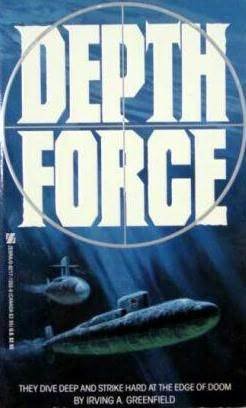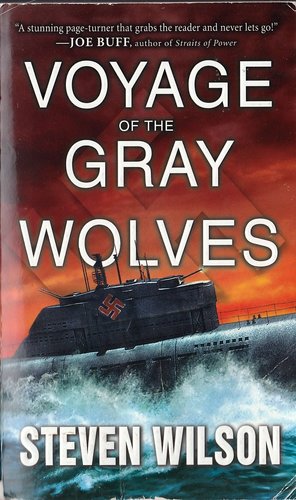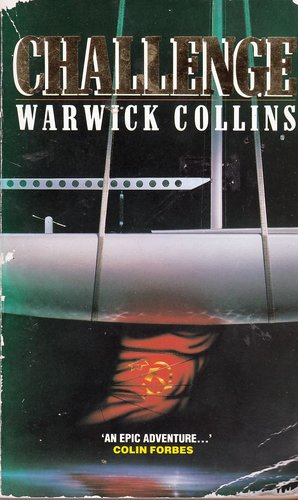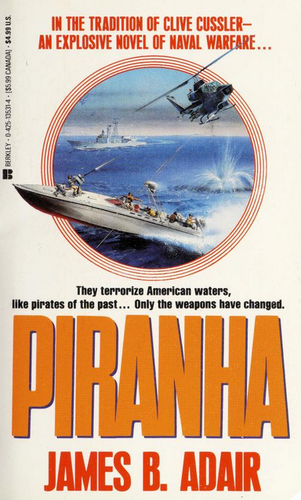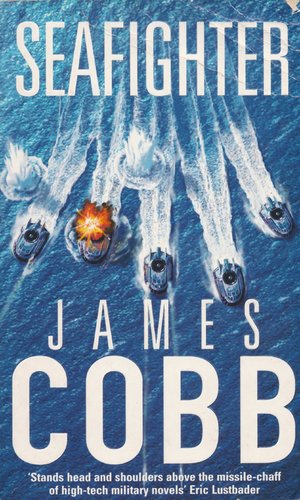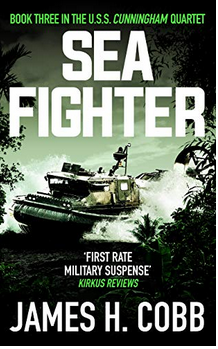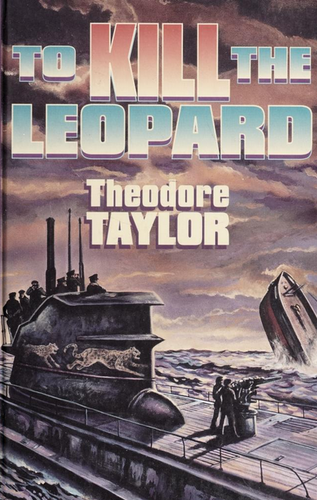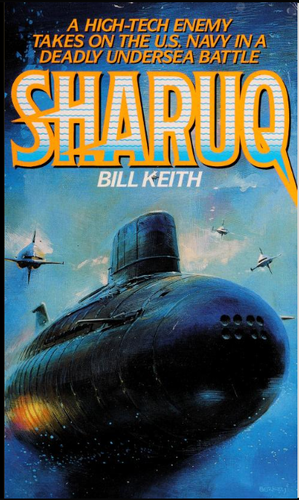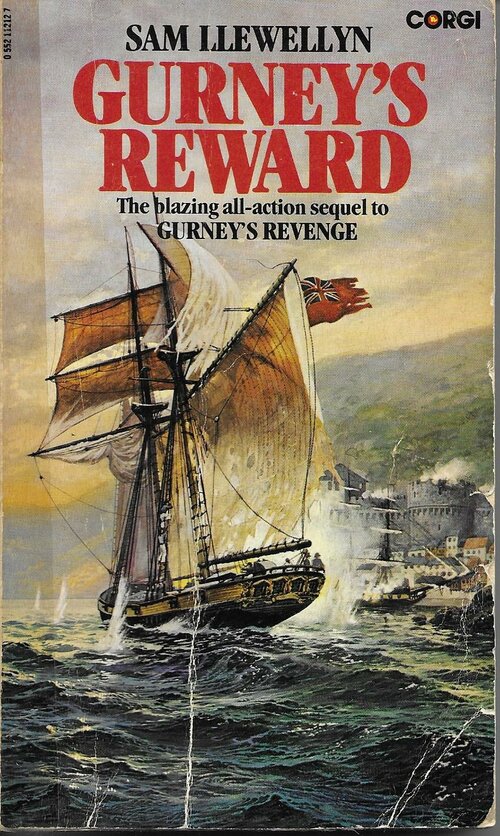Irving A. Greenfield, Depth Force, 1984
USS Stephen Decatur
'Aircraft Carrier', class not specified
No other details provided
Note: Author refers to this ship as an 'Attack Carrier' but provides no other specifics to determine class. The US Navy has never had ship named USS Stephen Decatur, but have had several named USS Decatur, in honor of Commodore Stephen Decatur. The most recent of these being an Arleigh Burke Class destroyer commissioned in 1998, its predecessor a Forrest Sherman Class destroyer was decommissioned in 1983 prior to being converted into a Self Defense Test Ship.
USS Stingray
Submarine (SSN), class not specified
Note: The name had last been used by the US Navy during WWII for a Salmon Class Submarine. The author spells the name 'Sting Ray', editorial discretion has been used.
USS Shark
Submarine, class not specified
Displacement: 25,000 tons
Length: 352ft (107.3m)
Beam: 45ft (13.7m)
Rated Maximum Operating depth: 3000ft
Engines: Nuclear (Uses High, rather than low pressure steam)
Speed: 60knots (Max, not specified if submerged or surfaced speed.)
Crew: 40
Armament: Unspecified Surface to Air & Surface to Surface Missiles, 4 x ICBMs with MIRV warheads (Most likely Tridents), 8 x TT (4 bow and 4 stern), 2 x 6 inch guns, 2 x 20mm guns mounted in the sail.
Electronics: The submarine is highly automated allowing many standard crew positions to be eliminated. The computer provides three dimensional projections of the submarines surrounds through two systems. The Grid Display Table (GDT) provides a precise map of the submarines surroundings and also allows a sonar 'snapshot' of everything within a 5000yard (4.6km) sphere of the submarine to be taken. The UnderWater Image Screen (UWIS) is a visual imager that displays a synthetic image of the submarines exterior based on the input from the submarines sensors. Also fitted is an Aircraft Target Indicator (ATI) capable of tracking 50 airborne targets simultaneously and determining their threat priority.
Hull: Three layer construction, outer layer is steel, middle layer is a glass like form of silicone and the inner layer is aluminum.
Also carries two "...undersea recon craft...". These are described as "...delta wing shaped and driven by an electric motor... fifteen knots under water and four at the surface. They were equipped with sufficient air supply... two men for six hours and they were armed with four mini torpedoes, each of which had an effective operating range of four thousand yards."
Note: Conning tower is retracted into the hull underwater to allow for the high speed. The submarine is not attached to the United States Navy but is operating under the auspices of the CIA.
MV Tecumseh
Submarine Support Ship (Modified Oil Tanker)
No specifics as to dimensions, but large enough to house a dock for the USS Shark inside the hull.
Engines: Nuclear (Stated to be identical to the power plant used on the Nimitz Class Aircraft Carriers, the ship has been designed to simulate use of a conventional power plant.)
Note: Nominally owned by the Thomas W. Williams Company (Stated to be a shell company owned by the CIA.), the crew of the USS Shark are listed as crew members, but there is also a cover crew on board. During the briefing it's stated the idea for this ship was taken from an "...old James Bond film." This is the film 'From Russia with Love', whose novelization I've covered earlier in the thread.
Russia
Skoryy (Eng: Fast)
Kotlin (Pr. 56) Class Destroyer
Details as per the real ships.
Note: The ships name is also the name of the first Post-WWII Russian Destroyer class (No ship of the Skoryy class was given this name.). The ship is in the original Kotlin Class configuration (e.g. It has not been modified to carry Surface to Air Missiles.). The Kotlin Class as a whole was in service between 1955 and 1992
Z-15
Submarine (SSN), class not specified
Displacement (Surfaced): 4,500 tons
Length: 360ft (110m)
Armament: 4 x TT
No other details.
Note: Described in the text as a November (Pr. 627) class submarine, but the details regarding armament do not fit that class.
Q-21
Submarine (SSN), class not specified
Speed: 40 knots (Submerged)
Crew: 42
Armament: 5 x IRBMs (Three fwd of conning tower, two aft), 1 x 130mm gun (FWD), 2 x ZSU-23 AA guns (One on conning tower, one aft of conning tower), 6 x TT (4 bow, 2 stern)
Can handle all types of torpedos currently in service with the Russian navy, also carries torpedoes that are sonar (5km range)/television (500m) guided.
Captain has unofficialy named the ship "...More Dekar'..." which the author translates as 'Sea Savage', according to Google Translate the correct Russian would be "...Morskoy Dikar'..."
No other details provided.
Boris Paskov
Oiler, class not specified
No other details provided.
Unnamed
2 x 'Z Class' Frigates
No other details provided.
Krasivaya Ukraina (Eng: Beautiful Ukraine)
Gorky Class Cruiser (Fictional Class)
Described as a 'Heavy Cruiser'
No other details
Note: Author spells the cruisers name as 'Kraceve Ukran'. I've elected to substitute the correct translation derived from Google Translate in this case.
Unnamed
2 x Petrov Class Destroyers (Fictional Class)
No other details
Torpy Island Base
Guided Missile base.
Located on a island located "...a few degrees below the equator, in the middle of the Pacific ocean..." it sits on a "...fault that goes all the way down to the Antarctic." Author later states it is part of the 'Nekor Islands', a fictitious chain of coral atolls located '...somewhere in the South Pacific...'
Armed with "...long-range multiple warhead nuclear missiles..." In the same paragraph it's casually mentioned that the Russians never pulled the missiles out of Cuba following the Cuban Missile Crisis but instead shipped more in.
China (People's Republic)
Yu-Kwai Chwan
Type 056 Class Frigate (Fictional)
Armament: 1 x 2 5 inch (A Turret), 8 x AT-11 ASW Missiles (FWD, Most likely where B turret would have been on the unmodified ship.), 4 x AT-11 ASW Missiles (AFT), 2 x TT, 2 x AA mounts, 1 x Depth Charge Rack (Aft)
Dimensions as per the original Riga (P.50) Class Frigates
Note: Author describes this ship as "...a Chinese Type-Fifty-Six Missile Frigate. That's the one converted from the Soviet RIGA class DEs." No specifics are provided for the 'AT-11' ASW missiles, most likely these are related in some way to the Russian RBU series of ASW missiles. The actual Type 056 Class Frigates entered service in 2013 and are a replacement for the Type 053 Class.
No other details provided.
Non-ship, but interesting.
United States
Underwater breathing mask.
Description: Appears just like a standard scuba mask.
Capability: To extract oxygen directly from seawater, allowing a diver to operate without oxygen tanks at depths up to 500ft (152.4).
M-88 'Sidewinder'
Submachine Gun
Ammunition: .45 ACP (Can be converted to 9mm Parabellum)
Fire rate: 1200 rounds-per-minute
Can fire either a single round, three-round burst or full auto depending on how far back the trigger is pulled.
The ones in the novel are described as civilian versions of a weapon in service with the US Army, but no specifics beyond what's given above is provided.
Russia
AK-SK
Assault Rifle
5.56mm successor to the AK-74
Described as being newly introduced.
For the aircraft mavens.
United States
U-4
High Altitude Reconnaissance Aircraft
No other details provided
Note: Presumably the aircraft is a further development of the U-2.
Plot summary: The year is 1995. The US has just commissioned a new and highly secret submarine, it's undergoing it's sea trials when it's discovered the Soviets have built a missile base in the southern Pacific. It has to be taken out before it can be put online, only the new submarine appears to offer the chance to do so in deniable fashion.
Note: Irving A. Greenfield (b.1928) was a veteran author specializing in science fiction and borderline pornographic fiction, when this series was launched. Sporting impressive cover artwork (Not only better than the contents of the books, but better than the covers used on Richard P. Henrick's much superior fiction.), the series ran for 17 novels, plus a double length 'Super Depth Force' novel between 1984 and 1992. Having read this book I'm surprised the series lasted as long as it did, it feels like something from the 1960s and the authors emphasis on graphic sex scenes every other chapter does not help. I've seen other reviews online that indicate the series did not improve with time and may have held their audience by the simple expedient of ending each story on a cliffhanger.

